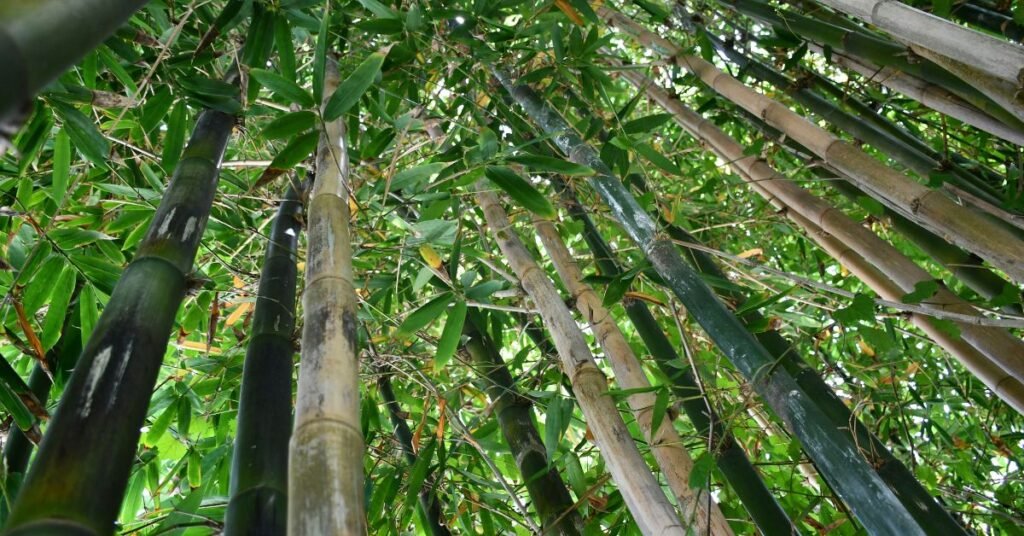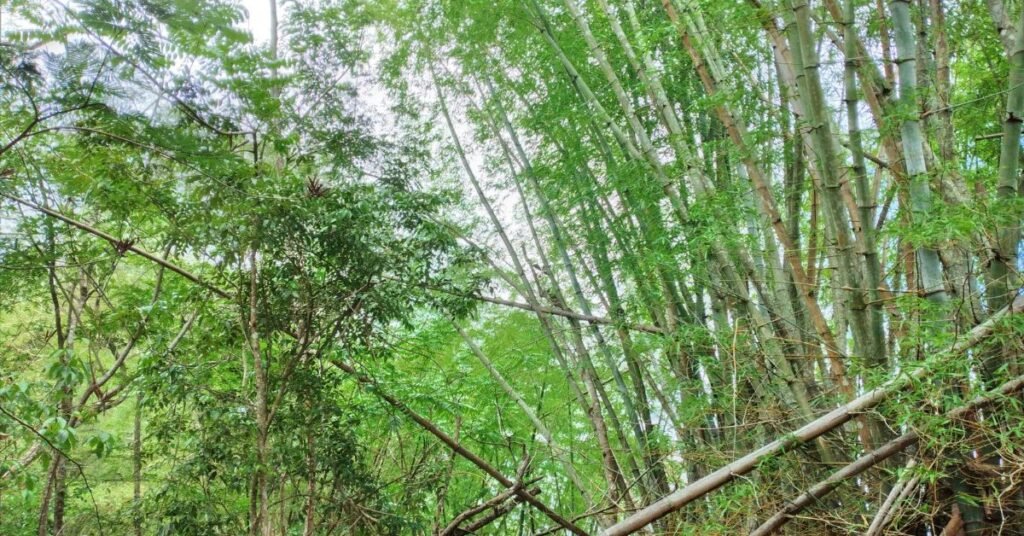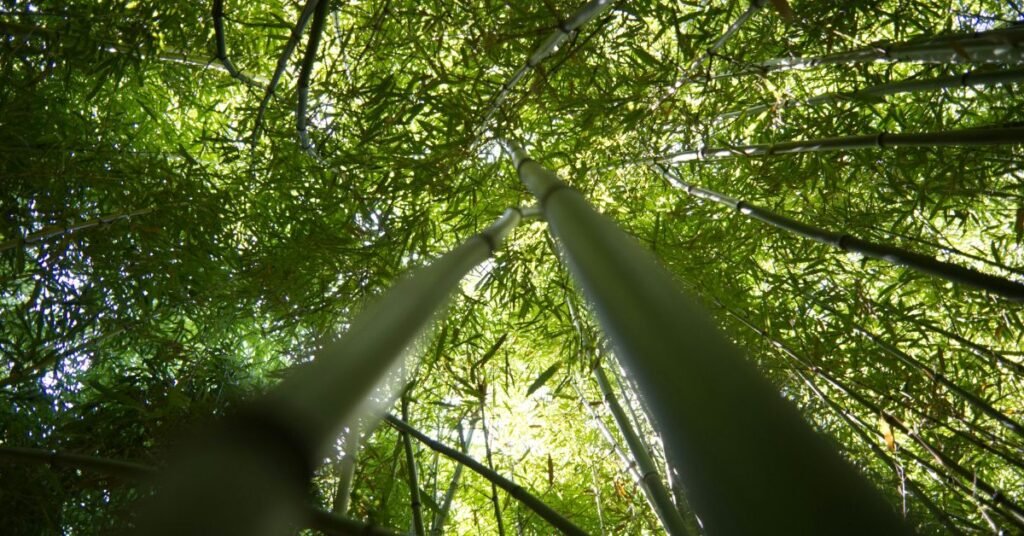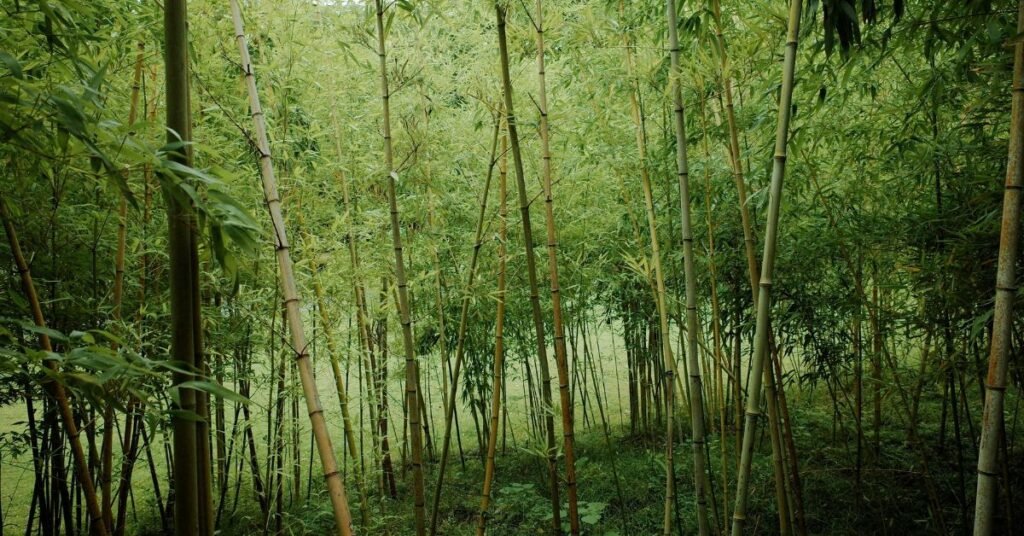Introduction

The Bonsai Bamboo Plant is one of the most graceful and symbolic houseplants admired for its minimalist beauty and deep cultural meaning. Although not a true bonsai in the traditional sense, this plant combines the elegance of bamboo with the art of bonsai cultivation. Known for symbolizing luck, peace, and prosperity, the Bonsai Bamboo Plant has become a favorite in homes, offices, and gardens around the world.
Easy to grow and highly adaptable, it brings both aesthetic charm and positive energy to any space.
Understanding the Bonsai Bamboo Plant
Despite its name, the Bonsai Bamboo is not a miniature bamboo tree. It’s often a Dracaena sanderiana, also known as Lucky Bamboo, trained and pruned in bonsai style. True bamboo species are difficult to maintain as bonsai due to their fast growth, but lucky bamboo, with its slow-growing and sturdy nature, makes a perfect alternative.
This plant’s flexible stems can be shaped and trained artistically into spirals, braids, or layered arrangements, reflecting balance and harmony in design.
Symbolism and Cultural Importance
The Bonsai Bamboo Plant holds great spiritual and cultural value, especially in Asian traditions.
- In Chinese culture, it symbolizes luck, wealth, and happiness.
- In Feng Shui, it is believed to attract positive energy (Chi) and bring harmony to the environment.
- The number of stalks also has different meanings:
- 2 stalks represent love and relationships.
- 3 stalks bring happiness, wealth, and long life.
- 5 stalks symbolize health.
- 8 stalks attract prosperity and abundance.
The combination of water, wood, and earth elements in bamboo bonsai makes it a powerful symbol of balance and resilience.
Appearance and Growth Habit
The Bonsai Bamboo Plant is admired for its bright green stems, pointed leaves, and compact form. The plant typically grows upright but can be shaped in various artistic ways depending on the pruning and training techniques used.
When maintained in small pots or ceramic containers, it develops a tidy and elegant look, perfect for tabletops, desktops, and home décor corners.
Its height usually remains between 6 inches to 2 feet, depending on care and pruning style. The glossy leaves add freshness, while the twisted stems bring an artistic element that enhances visual appeal.
Ideal Growing Conditions
1. Light
The Bonsai Bamboo Plant thrives in bright, indirect sunlight. Direct sunlight can scorch the leaves, while too little light causes yellowing and weak stems. Place it near a window with filtered light or in a well-lit corner of your home.
2. Water
Water is crucial for bamboo bonsai health.
- If grown in water, ensure that roots are always submerged in clean, chlorine-free water. Change the water every 7–10 days.
- If grown in soil, water the plant when the top inch feels dry, keeping the soil moist but never soggy.
3. Soil
For potted plants, use well-draining soil mixed with sand or perlite. Bamboo roots prefer moisture but cannot tolerate waterlogged conditions.
4. Temperature
The ideal temperature range is 18°C to 28°C (65°F to 85°F). Keep it away from cold drafts or air conditioning vents, as sudden temperature drops can cause leaf damage.
5. Humidity
Bamboo bonsai loves a moderate to high humidity environment. Mist the leaves occasionally to maintain moisture, especially in dry seasons or air-conditioned rooms.

Propagation
Propagation of the Bonsai Bamboo Plant is simple and rewarding. It is usually done through stem cuttings.
Cut a healthy stem below a node (where leaves emerge) and place it in water. In about two weeks, roots will begin to appear. Once roots develop, you can either leave the plant in water or transfer it to soil.
Propagation not only creates new plants but also helps rejuvenate older ones that have become tall or leggy.
Pruning and Training
Bonsai bamboo requires regular pruning and shaping to maintain its compact form.
- Pruning: Trim yellow or dead leaves and cut back long stems to encourage side shoots.
- Training: Use soft ties or wires to shape stems into spiral or braided forms. This should be done gently to avoid damaging the stems.
Regular pruning keeps the plant looking neat and promotes healthier growth.
Fertilizing
Feed your Bonsai Bamboo Plant once every 4–6 weeks during the growing season (spring to summer) using a balanced liquid fertilizer diluted to half strength.
Avoid over-fertilizing, as too many nutrients can cause yellowing or burnt leaf tips. Plants grown in water need even less fertilizer — about one drop per liter of water once a month is enough.
Common Problems and Solutions
1. Yellow Leaves
This is often caused by chlorinated water or too much sunlight. Use filtered water and move the plant to indirect light.
2. Soft or Rotting Stems
Overwatering or stagnant water can lead to root rot. Change the water regularly or improve soil drainage.
3. Faded Color or Weak Growth
Lack of light or nutrients may cause dull color. Place the plant in a brighter location and feed it monthly during active growth.
4. Pests
Occasionally, spider mites or aphids can appear. Wipe leaves with a damp cloth or spray mild neem oil to eliminate them safely.
Care and Maintenance Tips
- Keep the plant away from direct sun and cold drafts.
- Use distilled or rainwater for best growth.
- Trim regularly to maintain shape.
- Clean leaves with a soft cloth to remove dust.
- Rotate the pot occasionally to ensure even light exposure.
- For water-grown plants, ensure that pebbles or glass beads are clean and algae-free.
Consistent care will keep your bonsai bamboo lush and vibrant year-round.
Uses and Benefits
1. Decorative Appeal
Its elegant design makes it ideal for homes, offices, or reception areas. The lush green stems bring freshness and calmness to any décor.
2. Feng Shui Energy
According to Feng Shui, placing the plant in the east or southeast corner of a home or workspace attracts wealth and positive energy.
3. Air Purification
Like many green plants, bonsai bamboo helps clean the air by removing toxins and increasing oxygen levels.
4. Symbol of Luck
Gifting a Bonsai Bamboo Plant is considered an auspicious gesture, symbolizing good fortune, love, and success.

Conclusion
The Bonsai Bamboo Plant is more than just a decorative plant — it’s a living symbol of strength, peace, and harmony. With minimal care requirements and incredible aesthetic appeal, it fits perfectly into modern lifestyles.
Whether you want to enhance your home décor, bring positive energy into your space, or gift someone a symbol of good luck, the Bonsai Bamboo Plant is an excellent choice. With its calming presence and graceful charm, it continues to inspire peace and prosperity wherever it grows.

